Training Courses (Resources)
Training Courses
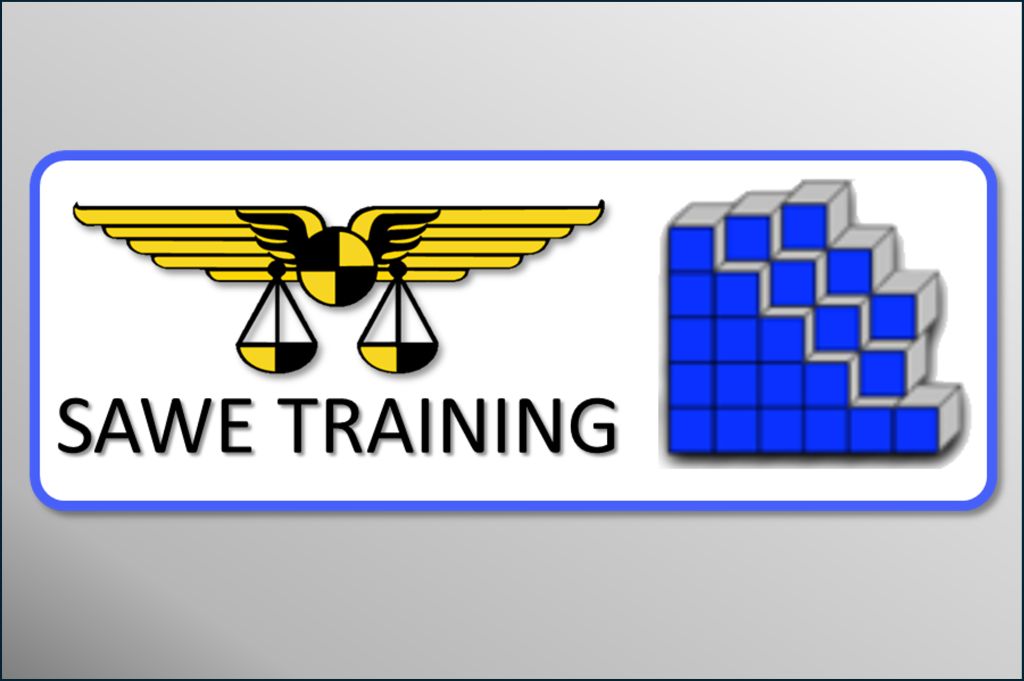
Learning Opportunities
Welcome to our SAWE Training Curriculum.
The SAWE is proud to offer numerous specialized training courses to help you to improve your knowledge. These courses, developed and delivered by specialists in the field of Mass Properties or by our partners, provide unique insights into key areas of interest encountered during our work.
Courses are available in a variety of methods including on demand recorded videos, and real-time classes which can be delivered in-person at conferences, at your site, or virtually. Click on the Training Events button below to see when the next scheduled training sessions are being offered. If you would like to schedule a class for your organization either on-site or virtual, click the Contact Us button to let us know.
We trust that you will find a course in the area in which you desire to improve your skills, however, if there is another topic or area which you would like to see covered, please click on the Contact Us button below, complete the online form, and we'll be more than happy to get in contact with you to see how we can meet your requirements.
Also, if you need a replacement copy of a previous training certificate, use the appropriate button below.
Pick Your Course
Select On Demand or an Industry Category below and use the buttons to navigate through our list of courses. We are continuously developing and adding courses, so check back often to see what's new!
Course Descriptions
MPE 101 Video Series
This series of bite-sized videos is ideal for use as both a training aid and as an informational overview of Mass Properties.
Courses are typically no longer than 30 minutes in duration.
Session 1 is free, and available now. Subsequent Sessions are currently in development and will be available as soon as possible. The sessions are as follows:
- Session 1: Introduction to Mass Properties Engineering (Available Now)
- Session 2: Mass Properties Fundamentals (In Development)
- Session 3: The Ethics of Mass Properties (In Development)
- Session 4: TBA
- Session 5: TBA
Click on the buttons to the right to access the video sessions. Click below if you have questions or comments.
Aircraft Weight and Balance
This two-day course assumes a basic knowledge of weight and balance. The class will demonstrate and teach proper procedures for weighing and completing forms for military aircraft. The intent of this class is to provide the student with an understanding of the weight and balance system within the United States Armed Services and “pitfalls” involved in weighing aircraft.
Students should bring basic calculators, paper, and pens/pencils for use in examples and exercises. Students should also dress appropriately for the trip to the aircraft hangar. Wear rubber-soled, closed-toed shoes.
All training class attendees will receive a course completion certificate with associated Professional Development Hours (PDH) in order to assist them in satisfying any professional development requirements they must meet.

Errol Oguzhan
Instructor: Errol Oguzhan
SAWE Honorary Fellow
Lockheed Martin Aeronautics (Retired)
Errol Oguzhan had a 38 year career primarily in the Aerospace Defense industry. He holds a BS in Aerospace Engineering and a ME in Civil Environmental Engineering, as well as a Texas Professional Engineering License in Environmental. Over his career in Mass Properties he has held positions from Advanced and Preliminary Design through Flight Test, Production, Development, and Sustainment. He has weighed over 100 aircraft and supported the US military as well as numerous International militaries. He has been a long standing SAWE member for 38 years and held all local offices in the Texas Chapter, Conference Chairman for three International Conferences and two Training Conferences, and International SAWE Senior VP and VP Training. He is recognized as a subject matter expert in mass properties and is an SAWE Honorary Fellow and Lockheed Martin Associate Fellow. In his spare time he enjoys hiking, travel, cooking, and all things wine. He is a proud member of the Exempt Fireman’s Association of Garden City, NY.
Automated Weight & Balance System (AWBS v11)
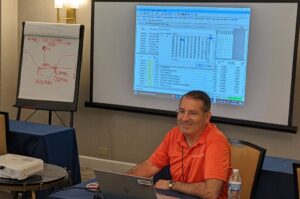
AWBS
SAWE does not provide AWBS software, a license can be obtained by visiting the AWBS website at https://awbs.hill.af.mil or contact the AWBS help desk at AWBS.Software@lmco.com .

Harold Smoot
Instructor: Harold Smoot
SAWE Honorary Fellow
Lockheed Martin Aeronautics
Developing Basic Parametric Methods
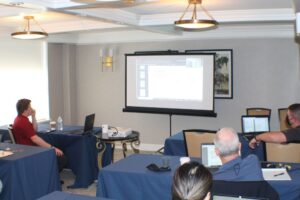
Developing Basic Parametric Methods
Have you ever been asked to predict the future? With a little information, you can explore the solution-space around the problems you encounter on the job as a Mass Properties engineer. The course will cover:
- Parametric estimation and rapid aircraft mass properties.
- Feasibility studies on detail design projects.
- Conceptual trade studies based on very limited information.
- Quantify predictive and descriptive uncertainty around your predictions.
- Calculate the benefits of next-generation technologies.
Agenda items will include basic statistical terminology, statistical correlation processes, parametric estimation pitfalls, and a parametric fighter aircraft wing weight correlation example.

Andy Walker
Instructor: Andy Walker
SAWE Fellow
Lockheed Martin Aeronautics Co.
Andy Walker is currently Functional Manager for Mass Properties at the Combat Air Division for Lockheed Martin Aeronautics. He gained his BS Mechanical Engineering in 2004 from Texas Christian University and his MS Aerospace Engineering in 2009 from The University of Texas at Arlington.
He has extensive experience in all areas of Mass Properties from conceptual design, through detail design and into operational support (cradle to grave.)
A further recognition of his knowledge and the esteem in which he is held is in his selection to update the Mass Properties portion of the AIAA textbook on the Fundamentals of Aircraft Design originally published by Leland Nicolai.
He has been an active SAWE member for a number of years and has held various offices at Local Chapter level. He has authored papers, chaired virtual forums and in 2016 was responsible for the development of, and is instructor on, the Parametric Mass Properties Course, as well as his instructor role on the Designing the Aircraft of the Future course since 2018. He was the recipient of the 2016 SAWE, Mike Hackney Best Paper Award and was awarded the SAWE Ed Payne Young Engineer Award in 2017.
Designing the Aircraft of the Future
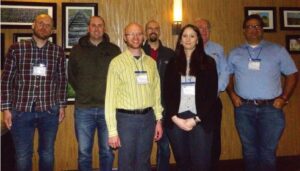
Designing the Aircraft of the Future
This two-day class presents the principles of weight engineering in new Aircraft Design as described in the SAWE Aircraft Weight Engineering Textbook.
Course topics include: Requirements Development, Aircraft Performance, Conceptual Aircraft Design Weight Estimates & Optimization, Weight Trades, Engine Selection, Vendor Weight Selection, Establishing Target Weights, Operational Weight, Preliminary Design Studies, Detail Design and Database Management. The class will use the issues that occur with future trainer aircraft as an example of applied Weight Engineering.
Students attending the class will receive a copy of the Aircraft Weight Engineering Textbook.

Andy Walker
Instructor: Andy Walker
SAWE Fellow
Lockheed Martin Aeronautics Co.
Andy Walker is currently Functional Manager for Mass Properties at the Combat Air Division for Lockheed Martin Aeronautics. He gained his BS Mechanical Engineering in 2004 from Texas Christian University and his MS Aerospace Engineering in 2009 from The University of Texas at Arlington.
He has extensive experience in all areas of Mass Properties from conceptual design, through detail design and into operational support (cradle to grave.)
A further recognition of his knowledge and the esteem in which he is held is in his selection to update the Mass Properties portion of the AIAA textbook on the Fundamentals of Aircraft Design originally published by Leland Nicolai.
He has been an active SAWE member for a number of years and has held various offices at Local Chapter level. He has authored papers, chaired virtual forums and in 2016 was responsible for the development of, and is instructor on, the Parametric Mass Properties Course, as well as his instructor role on the Designing the Aircraft of the Future course since 2018. He was the recipient of the 2016 SAWE, Mike Hackney Best Paper Award and was awarded the SAWE Ed Payne Young Engineer Award in 2017.
Vendor Weight Control
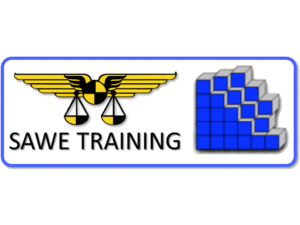
Learn through In-person, online, or onsite courses taught by experts.
This one-day class discusses the various items included in RP100 Vendor Weight Control for the Aircraft Industry as well as RP 15/M-4 Vendor Weight Control for the Marine Industry. Although some of the acronyms and definitions may vary, these two RPs share many common requirements regarding the data requested from vendors. The course covers the major sections of the two RPs and provides examples of the sort of data that are required of vendors based on these sections. The instructor presentation will be followed by in-class discussion enabling students to ask specific questions that may address problems or clarification of requirements.
Topics that will be covered are: Introduction and Purpose, Equipment and Supply Chain, Weight Control, Mass Properties Requirements, Weight Reduction Programs, Actual Weighing and Verification, and Weight Reporting. Other topics may be discussed as time permits.
The goal of this course is to introduce you to vendor weight control, detail the different phases and types of deliverables you may be required to produce, and provide guidance on how to achieve these requirements.

Rod Van Dyk
Instructor: Rod VanDyk
SAWE Fellow
Safran Landing Systems
Rod vanDyk is a Senior Mass Properties Engineering Analyst for Safran Landing Systems. He has supported the engineering team there for over 18 years providing mass properties support at every stage of the landing gear development process for many commercial and military programs. Rod’s total engineering career has spanned over 34 years which includes 11 years with Bombardier Aerospace (mass properties, flight test loadmaster, and customer engineer), and 5 years with Pratt & Whitney Canada (mass properties and assembly/test technician). His background has given him a firm understanding of most aircraft systems and structures along with a myriad of experiences.
Rod’s involvement in the SAWE has spanned over 25 years with officer positions at both Local Chapter and International Level. Rod became an SAWE Fellow in 2017 and has also been an SAWE Instructor for over 8 years (after developing the Aircraft Fuel Calibration and Verification course with Jerry Pierson.) Rod has recently become a Mentor for both the SAWE and Safran.
Rod has received various certifications and awards from both his workplace and through the SAWE. He achieved his honors diploma in Air Transport and Industrial Engineering from Durham College in 1990. Rod’s interests include road cycling, playing piano, soccer, and travelling/camping/canoeing with his family.
Structural Weight Optimization for Mass Properties Engineers

Learn through In-person, online, or onsite courses taught by experts.
This one-day class will enable Mass Properties Engineers to identify and realize weight reduction opportunities through application of finite element analysis based structural optimization. The course will cover the topics key to successful application of structural optimization which include:
- fundamentals of finite element analysis,
- fundamentals of structural optimization,
- identification of optimization opportunities,
- formulation of structural optimization problem,
- design interpretation,
- design validation,
- practical engineering aspects of structural optimization.
Classroom instructions on these topics will be consolidated using hands-on exercises.
 Instructor: Raj Bishnoi
Instructor: Raj Bishnoi
Altair (SAWE Corporate Partner)
Marine Vehicle Weight Estimating Methodology

Learn through In-person, online, or onsite courses taught by experts.
This class discusses the fundamentals of marine vehicle weight estimating, including a review of the weight estimating methods described in the Society of Allied Weight Engineering Recommended Practice 14 “Marine Weight Estimating & Margin Policy Guideline”.
The class will cover the theory, and application of these methods on specific examples and for whole ship design. The appropriateness of each method for each stage of ship design, construction and operation will be discussed. Historic examples of weight estimating errors will also be covered so that these practices are avoided.
The students will work examples to estimate the weight of a vessel using multiple methods.
Classroom materials and exercises will be provided.
 Instructor: Davy Hansch
Instructor: Davy Hansch
SAWE Fellow
Huntington Ingalls Industries
Advanced Mass Properties Measurement

Learn through In-person, online, or onsite courses taught by experts.
The class provides training in the measurement of center of gravity, moment of inertia and product of inertia, with emphasis on the various measurement methods used in industry.
The class begins with a review of the definitions and continues with the principles of mass properties measurement.
Students will learn about the relationship between MOI and POI and receive instruction on the MOI method to determine POI.
Topics include:
- Discussion of balancing applications
- Sources of measurement error and uncertainty
- Fixturing best-practices
 Instructor: Bob Cipolli
Instructor: Bob Cipolli
Raptor Scientific (SAWE Corporate Partner)
Mass Properties Control and RP7

Learn through In-person, online, or onsite courses taught by experts.
The class will familiarize students with effective control of the weight and other mass properties of an aircraft. The class will also expose students to other considerations associated with mass properties management and control described in SAWE RP-07.
The primary objective will be to acquaint participants with the major considerations for successful weight control during the development phases of a program, to include: concept exploration, demonstration, validation, and full-scale development.
These major elements incorporate planning, organizing, staffing, subcontractor control, requirements allocation, risk reduction, data collection, analysis, tracking, controlling, weight reduction programs, validation, verification, and test support.
 Instructor: Paul Kachurak
Instructor: Paul Kachurak
SAWE Fellow
Naval Air Systems Command
RP A-7 Mass Properties Management and Control of Military Aircraft – Recorded

Learn through In-person, online, or onsite courses taught by experts.
This class will familiarize students with effective control of the weight and other mass properties of an aircraft and will also expose students to other considerations associated with mass properties management and control described in SAWE RP A-7.
The primary objective will be to acquaint participants with the major considerations for successful weight control during the development phases of a program, to include: concept exploration, demonstration, validation, and full-scale development. These major elements incorporate planning, organizing, staffing, subcontractor control, requirements allocation, risk reduction, data collection, analysis, tracking, controlling, weight reduction programs, validation verification, and test support.
The course consists of four chapters:
- Overview, History, Scope and Glossary
- Process of Managing and Controlling Mass Properties, Part 1
- Process of Managing and Controlling Mass Properties, Part 2
- The Mass Properties Control and Management Plan
The total duration of this course is 2 1/2 hours.
This class is pre-recorded and available on demand.
 Instructor: Dudley Cate
Instructor: Dudley Cate
SAWE Fellow
Naval Air Systems Command - Retired
Aircraft Weight Estimating and RP8

Learn through In-person, online, or onsite courses taught by experts.
The objectives of this course are to provide an overview of weight estimating methods and the weight estimating process for aircraft and to provide insight into the weight and balance reporting formats and requirements of SAWE Recommended Practice 8.
Included will be descriptions of the many types of aircraft estimating methods, together with their applicability and limitations. Many other weight estimating considerations also will be addressed, including impacts of new technologies, estimating prototypes and derivatives, sources of weight data and estimating methods, and dealing with estimating uncertainty. Estimating aircraft center of gravity location and moments of inertia will be briefly discussed.
The portion of the course devoted to RP-08 will address the three major parts contained therein. The basic RP-08 concept of allocation by function will be explained, and the important RP-08 allocation instructions will be covered. The requirements for structural increments and design information also will be addressed, along with why inclusion of those data is so important to weight estimating and weight control.
 Instructor: Paul Kachurak
Instructor: Paul Kachurak
SAWE Fellow
Naval Air Systems Command
Aircraft Weight Estimating and SAWE RP8 – Recorded

Learn through In-person, online, or onsite courses taught by experts.
The objectives of this course are to provide an overview of weight estimating methods and the weight estimating process for aircraft, and to provide insight into the weight and balance reporting formats and requirements of SAWE Recommended Practice 8.
Included will be description of the many types of aircraft estimating methods, together with their applicability and limitations. Many other weight estimating considerations also will be addressed, including impacts of new technologies, estimating prototypes and derivatives, sources of weight data and estimating methods, and dealing with estimating uncertainty. Estimating aircraft center of gravity location and moments of inertia will be briefly discussed. The portion of the course devoted to RP8 will address the three contained therein. The basic RP8 concept of allocation by function will be explained, and the important RP8 allocation instructions will be covered. The requirements for structural increments and design information also will be addressed, along with why inclusion of those data is so important to weight estimating and weight control.
The course consists of an introduction and seven chapters:
- Overview of Weight Estimating
- Conceptual Estimating Methods
- Parametric Estimating Methods
- Analytical Estimating Methods
- Other Estimating Methods and Challenges
- Other Considerations
- Weight and Balance Reporting Forms for Aircraft
The total duration of the audio/slideshow Aircraft Weight Estimating and SAWE RP8 is 3 1/2 hours.
This class is pre-recorded and available on demand.
 Instructor: Dudley Cate
Instructor: Dudley Cate
SAWE Fellow
Naval Air Systems Command - Retired
Introduction to Marine Weight Engineering for Non-Naval Architects

Learn through In-person, online, or onsite courses taught by experts.
The objective of this class is to provide an overview of the fundamentals of naval architecture principles and standard practices, and provide a basic understanding of the weight engineering processes relative to the marine vehicles in a marine environment with the effects of buoyancy, wind, and sea conditions. The course highlights the differences in mass properties in the Marine Industry versus the Allied Industries, as well as discusses actual examples of practical impacts of weight engineering in the Marine Industry. The course includes practical examples and class exercises.
 Instructor: TBA
Instructor: TBA
SAWE Member
Company
Aircraft Fuel System Calibration

Learn through In-person, online, or onsite courses taught by experts.
This four-hour class outlines the basic fuel usage process, including how fuel quantities are measured, fuel system calibration techniques, understanding terminology such as usable and unusable fuel, and all aspects of fuel usage that can be determined on the ground.
Mass Properties Engineers are often requested to either participate in or generate a fuel system calibration and verification process for new aircraft in development or for aircraft whose fuel systems have been modified, since it involves having the aircraft supported on scales.
This course gives all the pertinent steps to ensure that this process is completed in a safe, successful, and timely manner.

Rod Van Dyk
Instructor: Rod vanDyk
SAWE Fellow
Safran Landing Systems
Rod vanDyk is a Senior Mass Properties Engineering Analyst for Safran Landing Systems. He has supported the engineering team there for over 18 years providing mass properties support at every stage of the landing gear development process for many commercial and military programs. Rod’s total engineering career has spanned over 34 years which includes 11 years with Bombardier Aerospace (mass properties, flight test loadmaster, and customer engineer), and 5 years with Pratt & Whitney Canada (mass properties and assembly/test technician). His background has given him a firm understanding of most aircraft systems and structures along with a myriad of experiences.
Rod’s involvement in the SAWE has spanned over 25 years with officer positions at both Local Chapter and International Level. Rod became an SAWE Fellow in 2017 and has also been an SAWE Instructor for over 8 years (after developing the Aircraft Fuel Calibration and Verification course with Jerry Pierson.) Rod has recently become a Mentor for both the SAWE and Safran.
Rod has received various certifications and awards from both his workplace and through the SAWE. He achieved his honors diploma in Air Transport and Industrial Engineering from Durham College in 1990. Rod’s interests include road cycling, playing piano, soccer, and travelling/camping/canoeing with his family.

Learn through In-person, online, or onsite courses taught by experts.
The objective of this class is to provide the student with an understanding of the function of Naval Architecture in ship design. The course begins with the basic ship design spiral and then addresses the activities for each element of that design spiral. Definitions of common terms used in Naval Architecture will be provided. From this class, the attendee will gain an understanding of what the process of ship design is; how design decisions impact the whole ship, especially weight impacts; what design margins are, and how they are used; and how naval architects integrate all the desired features into the final ship. The course addresses the relationships of all engineering disciplines with Naval Architecture and overall ship design.
 Instructor: TBA
Instructor: TBA
SAWE Member
Company
Automotive Lateral Dynamics and Mass Properties

Learn through In-person, online, or onsite courses taught by experts.
The course learning objectives include enabling the student to be able to make reasonably accurate estimates via basic calculations/simple computer simulation of Rollover SSF (Static Stability Factor), Roll Gain, Lateral Steady-State Maximum Acceleration (Skidpad), and the associate Steer Angles/Slip Angles/Body Side Slip Angle at that steady-state condition.
Also, this course will enable the student to make an estimate of Lateral Transient Acceleration (Slalom) characteristics such as the Dynamic Index in Yaw (DIY), Transient Yaw Center, and the Ackermann Yaw Rate. Lastly, this course will enable the student to make estimates of Directional Stability (Oversteer/Understeer) Characteristics such as the Understeer Coefficient, Static Margin, Steady State Steering Angle, Characteristic Velocity (Understeer), Critical Speed (Oversteer), and the handling transition Critical Speed (Oversteer).
All individuals completing the course will receive a Certificate of Completion, a copy of the Course Vu-Graphs (MS-PowerPoint), a copy of SAWE Paper #3528 (“Mass Properties and Maximum Lateral Acceleration”), and a Max Lateral Acceleration Estimation Spreadsheet (MS-Excel).
 Instructor: TBA
Instructor: TBA
SAWE Member
Company
Measuring Mass Properties

Learn through In-person, online, or onsite courses taught by experts.
This is a basic class which teaches measurement of weight, center-of-gravity, and moments of inertia (MOI). Effects of gravity variation due to latitude and altitude will be explained. This class will demonstrate and teach moment of inertia measuring techniques typically used for missiles and control surfaces. The Mass Properties Measurement class will contain both a classroom presentation and a laboratory session. The class will consist of approximately three hours of lecture and five hours of hands-on laboratory session with participants making mass properties measurements.
The classroom discussion will include mass definition and mass measurement techniques. Force measurement methods such as spring scales, load cells, strain gauges, and rebalance technology will be discussed. The MOI definition and its relationship to torque and angular acceleration and measurement techniques will be included. The definition of Product of Inertia (POI) will be discussed and how it relates to Principle Axes definition, measurement, and calculation techniques. Laboratory exercises will include mass measurement, center-of-gravity measurement, MOI measurement using a torsion rod and the bifilar method. POI measurement/calculation and principle axis measurement/calculation will be taught.
It is the intent of this class to provide the student with an understanding of the methods for measuring moment of inertia. The class will conclude with the taking of a test to verify that the class has provided the students with the basic understanding of how to measure moment of inertia of a missile or a control surface.
Basic calculators will be needed for examples and exercises. Please dress appropriately for working with measuring equipment.
 Instructor: TBA
Instructor: TBA
SAWE Member
Company
Weight Management and Estimating for the Offshore Oil Industry

Learn through In-person, online, or onsite courses taught by experts.
Due to the unique nature of design and construction of fixed and floating offshore oil facilities (very few of which are identical), the oil industry relies on accurate weight management to provide data to create information that is used for structural design, cost estimating, and determining the most efficient means of transporting, lifting or towing a completed platform from a fabrication facility to its installation site.
Applications of proven methods (based on historical weight data and experience) are employed to determine preliminary weights for offshore structures. This early data is used to calculate estimated design and fabrication costs that are part of an overall feasibility analysis to determine the commercial viability of development of an offshore oil field. Numerous technical (severe environmental conditions, high production rates, corrosive environments, etc.) and monetary (high weight equals high cost) challenges must be overcome before an owner is comfortable with proceeding to exploit a new oil field from discovery to production.
With floating production facilities being installed in water depths approaching 10,000 feet, it is critical to develop the correct platform type (e.g., semi-submersible, spar, or FPSO (floating production, storage and offloading vessel)). Weight management is one of the key tools used to determine the correct production scenario.
This training course will highlight the importance of weight management in the oil industry, present several of the methods typically used to create preliminary estimates of weight and center of gravity, and walk through an example of estimating preliminary weight and CG data for a floating offshore platform.
 Instructor: TBA
Instructor: TBA
SAWE Member
Company
Ship Inclining Experiment

Learn through In-person, online, or onsite courses taught by experts.
This class will discuss the inclining of a vessel in order to determine its displacement (weight) and center of gravity. The primary emphasis will be on inclining in water, but inclining in air will also be covered. A classroom session on the theory, procedure, and results of inclining will be held, followed by an actual demonstration of inclining techniques aboard a waterborne vessel.
The objectives of the class are to provide the student with an introduction to the principles of naval architecture and marine terminology, and to discuss and demonstrate the inclining of a vessel to determine its weight and center of gravity. ASTM F 1321-90, standard Guide for Conducting a Stability Test, will be used as a text for this class. After a brief introduction to the principles of naval architecture, the theory and purpose of the inclining experiment will be presented. The light ship survey will be described and then the inclining experiment itself will be discussed. Preparations required aboard the vessel and ashore will be described, and plans and equipment required will be discussed and demonstrated. Inclining procedures, data, and calculations will be reviewed, and examples from an actual inclining will be examined in detail. Troubleshooting the results of the inclining, and matters of bias and accuracy, will be covered. Inclining of a small vessel in air will be discussed.
Following the classroom session, the class will travel to and board a vessel for a practical demonstration of an inclining. A brief light ship survey will be completed, drafts and specific gravity of the water will be taken, and inclining weight will be moved to obtain a plot of tangents and inclining moments. The resulting data will be processed, and the vessel’s light ship displacement and center of gravity will be determined at the conclusion. The class will conclude with a short open-book test and exercise to confirm that the student has gained an understanding of the theory and practice of inclining a vessel.
Basic calculators will be needed for examples and exercises. Students should wear casual clothes and rubber-soled shoes, as they will be boarding a vessel.
 Instructor: TBA
Instructor: TBA
SAWE Member
Company
Structural Optimization for Mass Properties Engineers (Pre recorded)

Learn through In-person, online, or onsite courses taught by experts.
Although similar in title to the Altair class above this class deals with a different set of topics. The class is pre-recorded and therefore available to view at the students own pace once purchased.
The class covers structural design and analysis considerations and their impact on Mass Properties. The course is for working engineers outside of the Stress or Loads organizations to provide insight into the decision tools and processes affecting structural integrity. Specific emphasis will be given to identify and explain the typical methods utilized by Structural Analysts and how these can sometimes adversely affect the optimization of the structure. Illustration of several accepted practices and their impact will be covered in the case studies. This course will also provide public domain strength and material-related references including but not limited to: FAA Metallic Materials Properties Development and Standardization (MMPD).
The course consists of eight chapters:
- Overview and Purpose
- Common Structural Design Features
- Historical Design Drivers
- Common Practices
- Hidden Gotchas
- Case Study: Aloha Airlines
- Case Study: 767 Freighter
- Case Study: Splice Design
The total duration of this course is 3 hours, 40 minutes.
 Instructor: Brett Anderson, P.E.
Instructor: Brett Anderson, P.E.
SAWE Fellow
The Boeing Company

